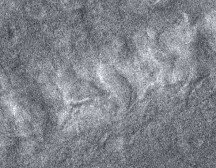 |
 Return to Methods List |
Methods in Neuroscience in vitro Slice Preparation - MAIN PAGE |
| The photos here were taken at the Marine Biological Laboratory in Woods Hole, Massachusetts during the summer 2001 Neurobiology course. Many thanks to the course instructors and students who made these pages possible. | ||
 |
SLICE TEAM NEVIN LAMBERT, PhD, Associate Professor, Dept of Pharmacol & Toxicol, Medical College of Georgia, neurobiology course instructor Joe Coyle, neurobiology course student Melissa Mahoney, neurobiology course student |
 |
| OVERVIEW |
| The in vitro brain slice preparation often is used to study processes involved in synaptic plasticity and to evaluate the role of native receptor subtypes in neurotransmission. Brain slices have been used for physiological studies since the early 1970's, and recording from neurons in brain slices using patch pipettes gained widespread use in the late 1980s, often with the aid of video microscopy. Recording using the techniques described here allows an investigator to confirm the identity of some neurons using morphological criteria, and to find relatively rare types of neurons. Brain slices allow recording from semi-intact neural circuits, with the advantages of mechanical stability and control over the extracellular environment. Whole-cell recording in brain slices is often combined with imaging techniques and indicator dyes to measure intracellular pH, calcium concentration, etc... It can also be combined with retrograde tracing techniques to record responses from neurons that project to a certain brain area. Brain slices are used for a wide variety of studies including synaptic plasticity and development, network oscillations, intrinsic and synaptic properties of defined neuronal populations, and many others. |
| Overview | Web Lectures | Fellowships | Activities | Home | SFN | NAS | IBRO |